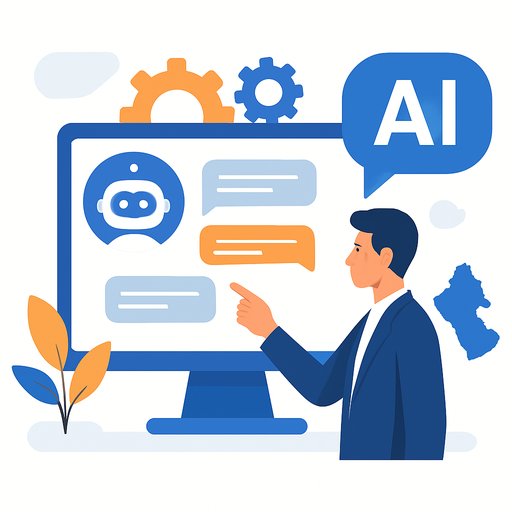Australian patience with automated customer service is wearing thin
Automation is everywhere in support, but Australian consumers are running out of patience with it. New research from Twilio and YouGov shows a clear gap between what customers expect and what they experience online.
If you lead a support team, the takeaway is simple: automation must earn its keep. Speed, clarity, safety-and a fast path to a human-are non-negotiable.
Key findings at a glance
- Expectation vs behavior: 96% believe they should be patient and polite; only 64% actually stay patient online.
- AI impact: 50% say AI in support makes them less patient.
- Patience by channel: 53% with AI chatbots, 54% with automated voice menus vs 88% for live chat with a human and 90% for phone calls with human agents.
- Top frustrations: AI not understanding questions (52%), having to repeat themselves (48%), scripted/robotic replies (46%).
- Adoption vs satisfaction: 78% have used AI tools; only 39% are satisfied.
- Human preference: 49% would start with a human even if slower; 84% want easy transfer from AI to a human.
- Business impact: 20% will switch or stop using a service if interactions take longer than expected.
- Brand damage: 34% more likely to downgrade brand perception (vs 29% regionally); 32% likely to share negative experiences (vs 25% regionally).
- Complex sign-ups: 40% wish they had never started long online processes.
- What customers value: quick resolution (49%), clear instructions (43%), data safety (38%).
Source study: Twilio in partnership with YouGov.
What this means for support leaders
Automation isn't the enemy-bad automation is. Customers will tolerate bots if they're fast, accurate, and get them to a human without hassle.
Build your system around one idea: reduce effort at every step. Every extra turn, repeat question, or dead end increases churn risk.
Fix the top friction points
- Understanding: Improve intent coverage with high-quality training data and continuous labeling of failure cases.
- Memory: Preserve context across turns and channels so customers never repeat themselves. Show what the system "remembers."
- Voice and tone: Replace canned scripts with clear, concise, human language. Default to short answers plus a single next step.
- Latency: Set and enforce response time budgets. If the bot can't help within two to three turns, escalate.
Make human handoff a first-class feature
- Prominent "talk to a human" option from the first screen.
- Skill-based routing with context carryover: pass history, intent, and prior steps to agents automatically.
- Clear status: queue time, position, and expected wait to reduce anxiety.
- Agent assist: summaries and suggested actions to accelerate resolution once handed off.
Design around a patience threshold
- Define a "patience budget" per task (e.g., 3 bot turns or 90 seconds).
- Trigger proactive escalation when confidence drops or the customer shows frustration signals.
- Offer channel switches (chat to call) for time-sensitive issues.
- Summarize the case before handoff so customers feel progress, not reset.
Shorten complex sign-ups and verifications
- Break flows into short, trackable steps with visible progress.
- Save-and-resume, pre-fill known data, and verify once.
- Plain-language instructions with a single example or screenshot.
- Provide a fast support lane for stuck verification-don't bury it.
Build trust into the experience
- Be explicit about data use and retention in plain language.
- Display security assurances (e.g., ISO/SOC certifications) where data is collected.
- Offer opt-outs for training AI on transcripts unless the customer consents.
Metrics that matter (optimize these weekly)
- Time to first helpful response and time to resolution by channel.
- First contact resolution and repeat contact rate for the same issue.
- Bot containment vs successful containment (bot solved without handoff and with positive outcome).
- Handoff rate with context completeness (what agents receive).
- CSAT/NPS by channel and intent-level failure reasons.
- Abandonment and drop-off in long flows (sign-ups, claims, onboarding).
Team and tooling moves
- Give agents AI co-pilots for summaries, next best actions, and knowledge lookup, not scripted replies.
- Run weekly review of bot failures and handoff transcripts; ship improvements every cycle.
- Create playbooks for high-friction intents with clear escalation triggers and messaging.
- Train for "human first" tone: concise, empathetic, and action-oriented.
"Australian consumers certainly see themselves as more patient than the average respondent across the rest of the APJ region. But that patience evaporates quickly when service lacks the human touch. The real differentiator will be how well brands strike that fine balance between efficiency with genuine, human connections that build enduring trust, loyalty and long-term competitive advantage," said Nicholas Kontopoulos, Vice President of Marketing for Asia Pacific and Japan at Twilio.
Bottom line
Automation should reduce effort and hand customers to the right human, fast. If it can't deliver speed, clarity, and safety, it's costing you patience-and revenue.
If you're upskilling your support org on AI-assisted workflows and agent assist, explore role-based programs at Complete AI Training.
Your membership also unlocks:






